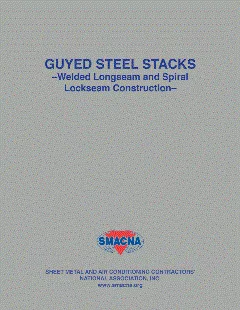Copper Gutters and Downspouts
Rainwater Systems Brings New Beauty to the Roofs of Larchmont, N.Y.
There are lots of stylish ways proud homeowners can alter the appearances of their house to impress the neighbors. Elements like colorful plants, professional landscape design and gazebos come to mind. Of course, these kinds of improvements are all basically decorative and have little if anything to do with the functional performance of the house. For owners who prefer practical value as well beauty, there are always replacement windows, doors, or one of the new high-tech roofs.
When it comes to home improvements, many homeowner give little if any thought to their rain gutters and downspouts. That’s because storm water removal systems are considered absolutely necessary but completely boring. Often they are available only in painted metal or PVC plastic. As for color, you have your choice: brown or white.
These limited options for storm water management are about to change — and not because of new technology, but rather because of the reemergence of very old technology.
Most people don’t even remember copper gutters and downspouts. Since they are generally associated with the era of the slate roof, they haven’t been prominent for a long time. Of course, using copper to remove rain from the roof and take it away from the foundation has never been a bad idea. Copper is strong, relatively light, doesn’t rust, and lasts a long time. The principal reason people went away from it is because copper is expensive. That’s not going to change. It’s getting more expensive all the time.
There is another negative, and it’s a big one: copper quickly oxidizes and can turns mottled green, bluish-green or brown. The condition is known as verdigris. While some people like the green patina that develops on copper over time, many think it is unsightly. You don’t have to give it much thought to know why people would resist spending good money for a disappointing appearance. Well, if that’s the issue, the problem has now been solved.
Five years ago, Ed Monks, a roofing contractor, in Westchester County, N.Y., was asked by a customer to install copper rain gutters, downspouts, and flashing on his house. There was one condition: the customer, Paul Hoffman of Larchmont, N.Y., wanted the copper to stay looking like copper.
Monks didn’t know what to do. He’d never heard of copper that didn’t turn to verdigris. That’s just the nature of the material. However, the job was a good one and he wanted to do it, so he decided to do some research. He found a product called Permalac made by Peacock Labs in Philadelphia. This was an outdoor clearcoat lacquer which was used by sculptors to protect cast bronze statues installed in public spaces. Other users who liked the product included professionals who installed cast iron fences around estates and companies who made and installed large stainless steel signs in front of corporate buildings.
Permalac had earned a reputation for providing excellent UV inhibition. It also protects vulnerable materials from salt spray, windborne sand and extremes of weather. Rather than coating the copper components on the ground, Monks decided to wait until the gutters and downspouts were in place before painting on two coats of Permalac. He worried that soldering could burn the coating and render it ineffective.
Monks found Permalac goes on easily and smoothly. It is self leveling so users don’t need to worry about puddling or dribbles. Since it dries enough for another coat in half an hour, it never holds up contractors who are trying to get to the next job. Contractors also use Permalac for wooden door restoration, as well as to protect other metal, wood or cement substrates.
In May of this year, Hoffmann called Monks and asked him to retreat the gutters and downspouts with Permalac. “Not that there was anything wrong — the copper looked as shiny and bright as ever,” Hoffmann said. “I just didn’t want to take a chance that it might start to lose its luster.”
In fact all the photographs taken for this article were shot before the re-treatment took place. Hoffmann said he’d moved to Larchmont because he is a lifetime sailor and he wanted to be near the water. “Of course it means a fairly frequent spray of salt mist hits the house and would wreak havoc on the copper if it wasn’t protected with Permalac.”
Monks notes there is no getting around the high cost of copper. “Copper is sold by weight and Aluminum by gauge, but copper is still about three times the cost of 32-gauge aluminum,” he said. “Nevertheless, copper does provide a far more durable storm water handling system. And it looks great on a sunny day, or even on an overcast one.”
“It’s worth every penny — even the ones that no longer shine,” said Hoffman.
Looking for a reprint of this article?
From high-res PDFs to custom plaques, order your copy today!




